Four Trends That Will Rock Digital Audio In 2023.
Inside Radio
January 09, 2023
Inside Radio
From the phase-out of third-party tracking cookies to growth in programmatic buying and new approaches to audience measurement, the digital audio industry is girding for some big changes in 2023. Here are four predictions of what lies ahead in the next 12 months as seen through the lens of key executives at Triton Digital.
Marketing tactics will need to evolve in a post-cookie world
The phase-out of third-party tracking cookies represents a big challenge for not just audio but the entire digital ad ecosystem. The broadcast radio and television industry would lose $2.1 billion in digital advertising revenue annually, if third-party cookies were eliminated today with no privacy-preserving alternatives, according to a study released last October by Borrell Associates. To confront the challenge requires ensuring the proper tools are used to activate and track advertising campaign effectiveness, says Benjamin Masse, Chief Product Officer, Triton Digital. “Strangely enough, many ad tech providers are still operating as if we are still gravitating around a browser-centric world,” he says. “However, we’re racing towards a world split between strong wall gardens from a handful of tech conglomerates and the open web.” One major hurdle is too much focus on replacing cookies and mobile advertiser IDs with so-called persistent IDs, which require registration. “The industry isn’t adapting at the proper speed, and many are still hoping for minimal impacts on how advertising is transacted,” Masse says. “Publishers and advertisers need to work hand-in-hand on scalable and relevant approaches that are not reliant on tracking listeners on an individual basis, but embrace probabilistic cohort-based targeting and measurement, compliant with the new privacy laws and audience’s expectations.”
Big data from streaming will be a key part of panel-based measurement
Audio measurement is anything but a best of both worlds scenario. Broadcast radio methodology is based on a panel of listeners and a representative sample but lacks the ability to measure streaming effectively. On the other hand, measurement of streaming audio server logs provides detailed insight on the total volume of streaming listening but lacks the ability to measure individual persons. “Over the next year, we’ll begin to see the emergence of insights captured from streaming logs used in combination with panel measurement to gain a holistic understanding of audiences – but it won’t be picture perfect right away,” says Daryl Battaglia, Triton’s Senior VP, Market Development & Strategy. He favors using big data in combination with representative panels, something Nielsen has talked about. “Reaping the benefits of a multi-sourced approach to measurement requires detailed knowledge of the big data from streaming logs, the normalization of data across publishers and removing invalid traffic and other non-human streaming sessions,” Battaglia says. “As we embrace this transition in audio measurement, it will be important to ensure a fair and consistent approach across publishers, relying only on high-quality big data that can be integrated with panel measurement.”
Programmatic buying will dominate
To efficiently reach a targeted audience at scale, ad buyers have increased their programmatic buying of audio inventory over 500% during the last five years in Triton Digital’s marketplace, the company says. Thanks to ongoing high interest in audio, Stephanie Donovan, Triton’s Global Head of Revenue, predicts ad spend via programmatic exchanges will continue to show “significant growth as brands aim to reach an engaged, mobile audience.” Donovan believes both the volume and publisher CPM rates for podcasting will continue to rise in 2023, with programmatic podcast advertising once again leading all other audio channels. “We’ll see dynamic ad insertion (DAI) continue to steal the spotlight from baked-in ads, building upon 2022 momentum,” Donovan says.
Publishers will experiment with content formats; industry titans will battle
The release of 2022’s Edison Research Infinite Dial showed a dip in weekly and monthly podcast consumption off the pandemic highs of 2021. To reverse those declines, publishers will need to experiment with content formats and push the boundaries of podcast marketing,” says Sharon Taylor, Triton’s Senior VP Podcast Strategy & Product Operations. “We can expect to see more publishers running more than one ad per marker to open inventory, experimenting with exclusive sponsorship buys and contextual offerings, and turning to new programmatic buys with brand safety enabled,” she says. Look for YouTube, Apple and Spotify to continue to duke it out over ultimate monthly active users and time on each platform. “Publishers will feel the pressure to expand their slate of shows – needing to experiment with paid content and video publishing, whilst resisting the notion that all podcast content needs to be one or the other,” according to Taylor.
